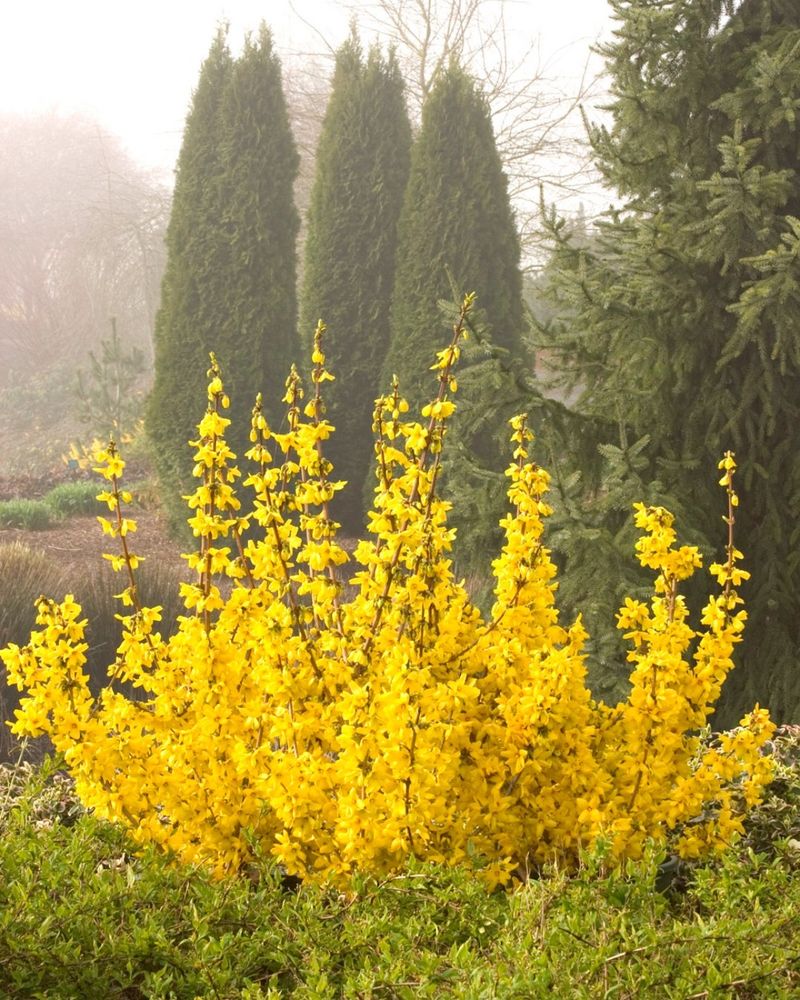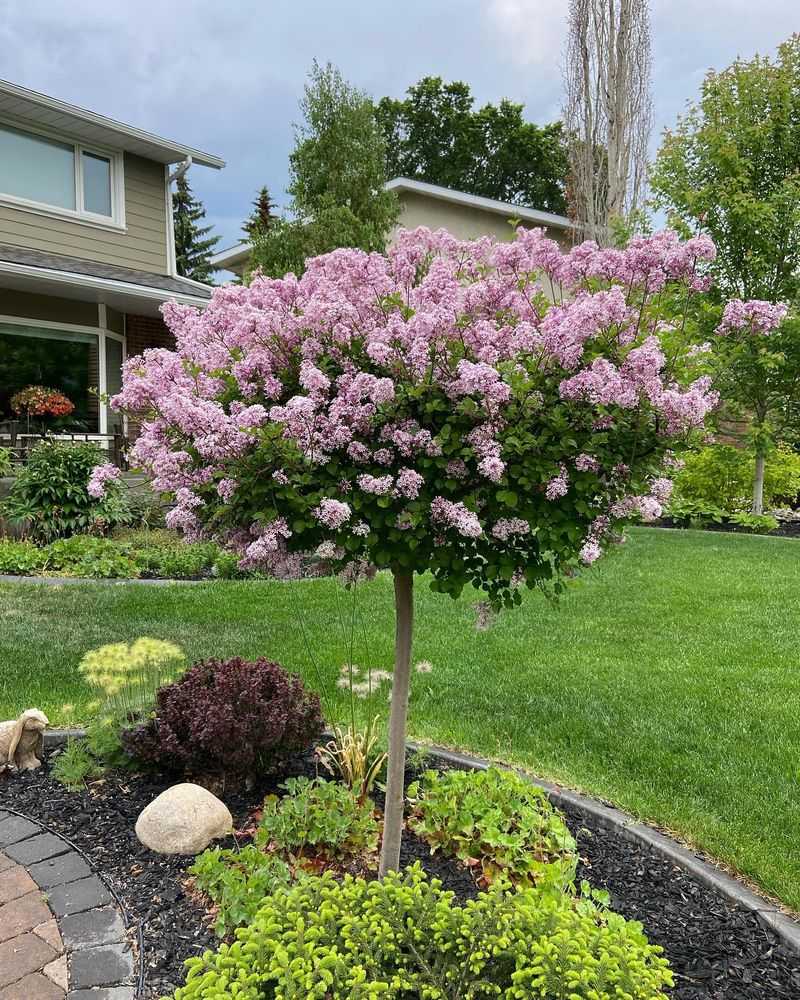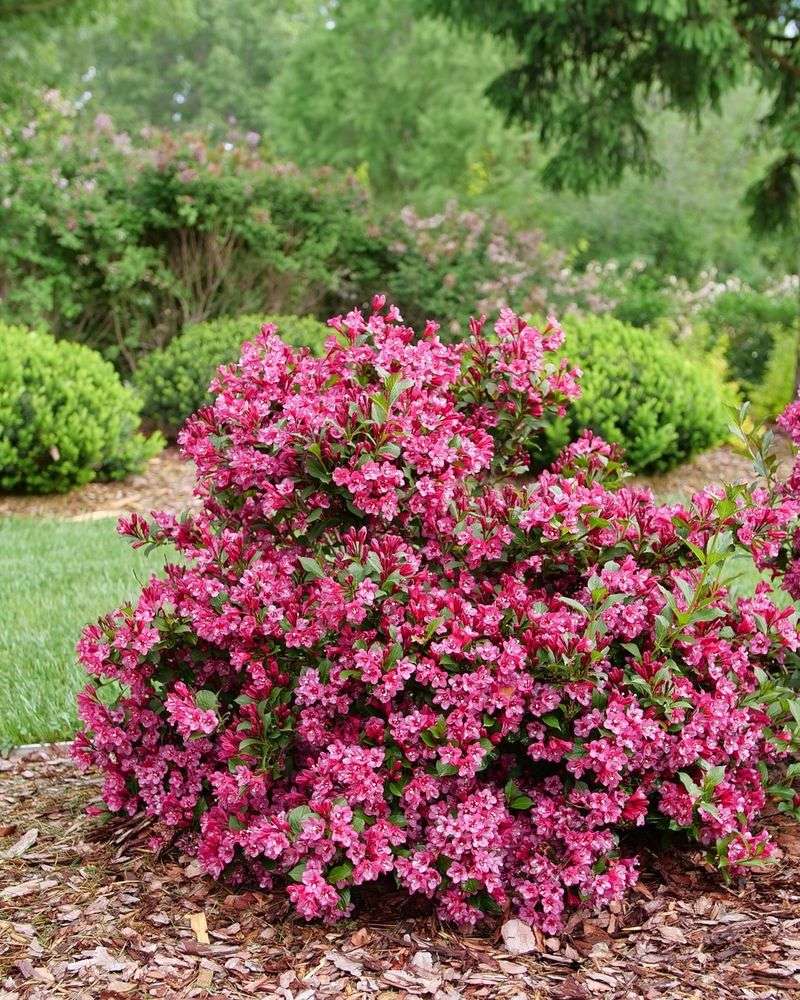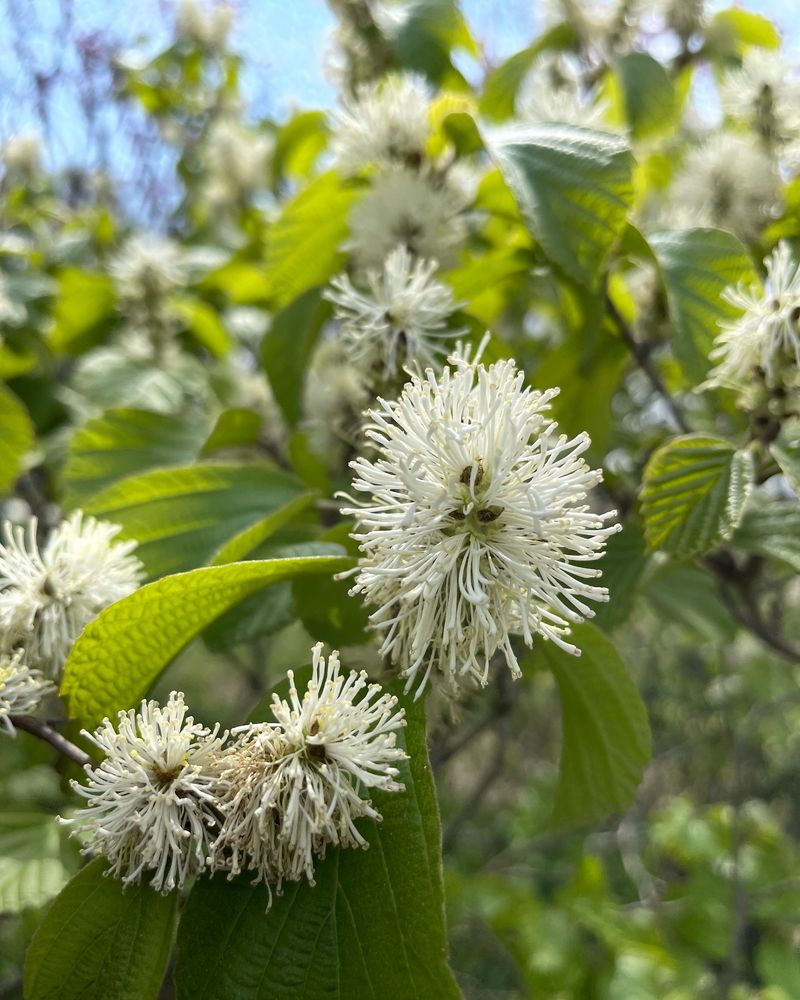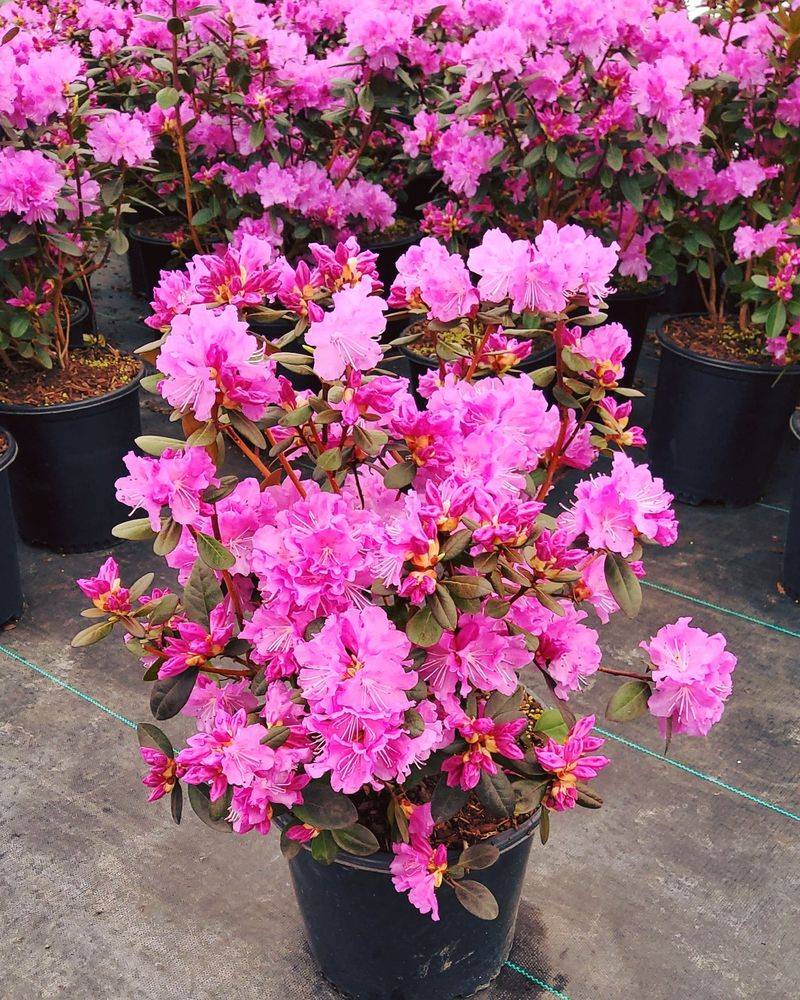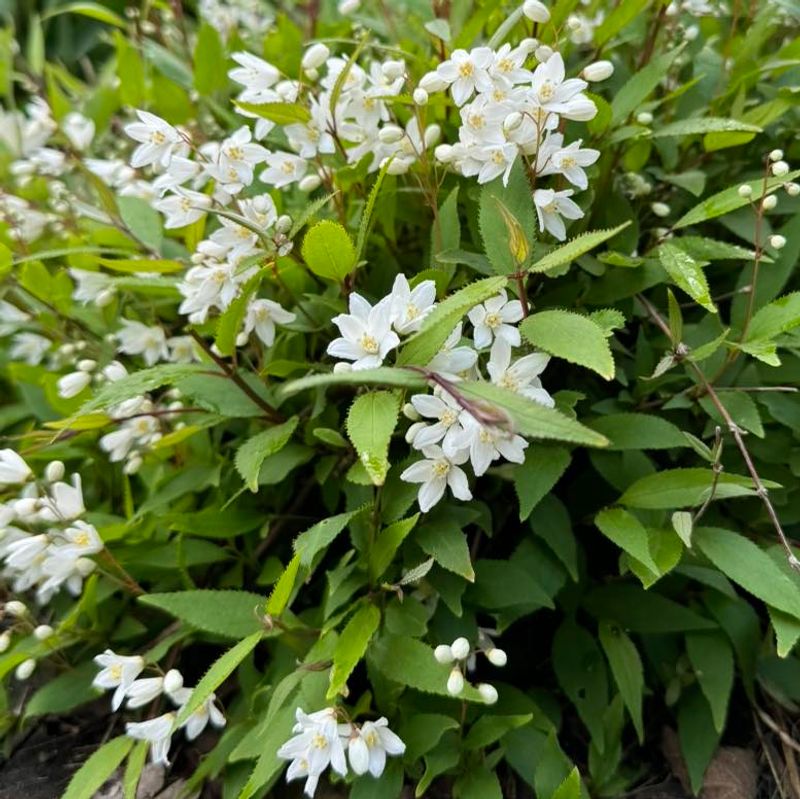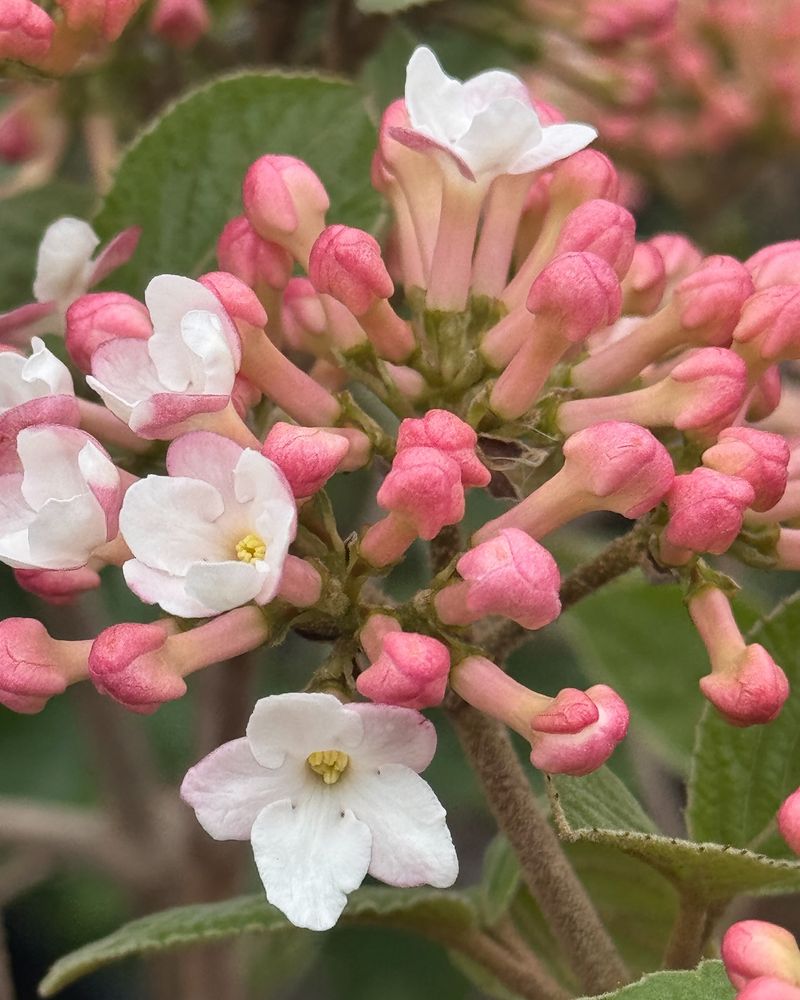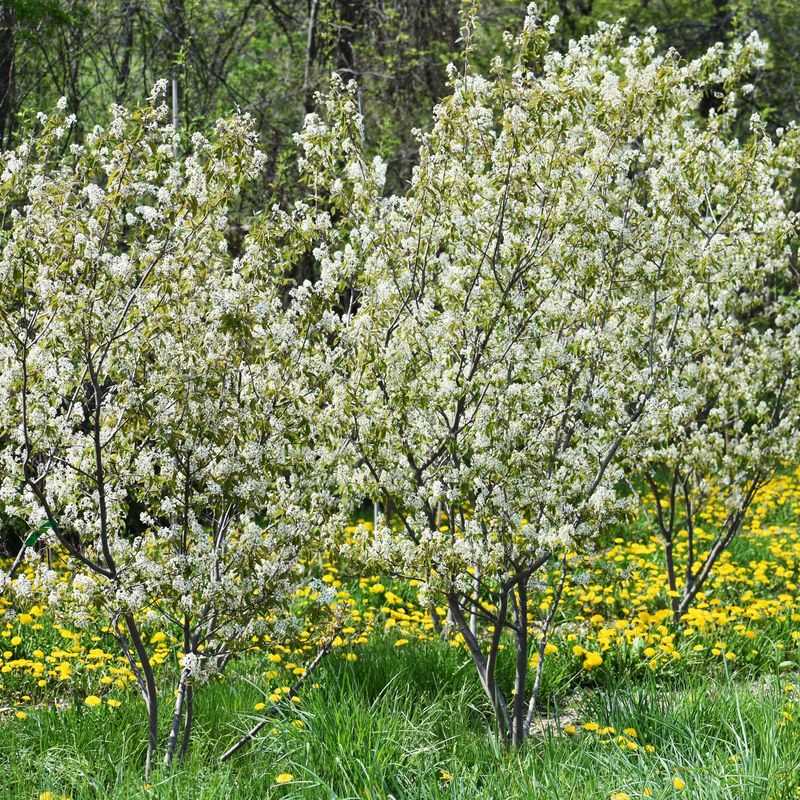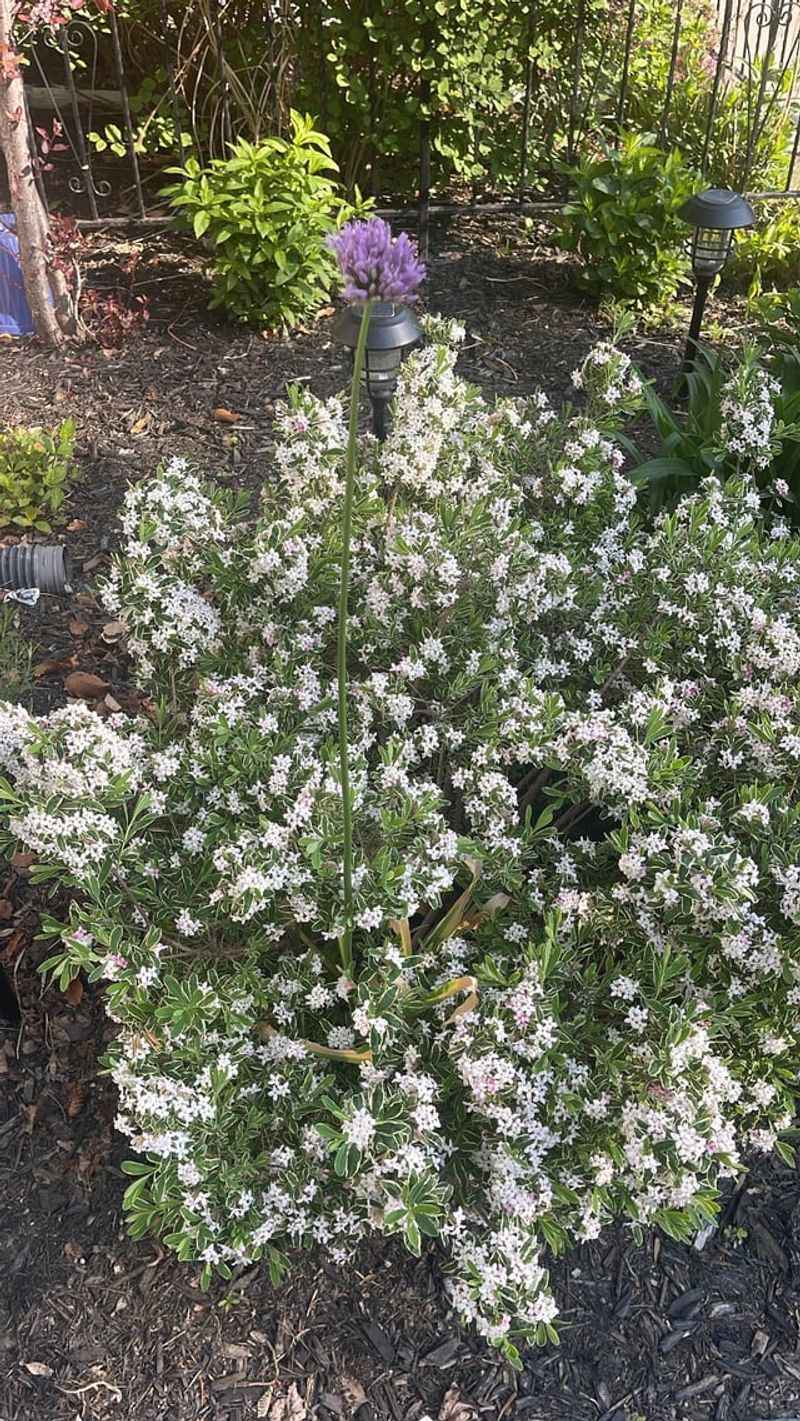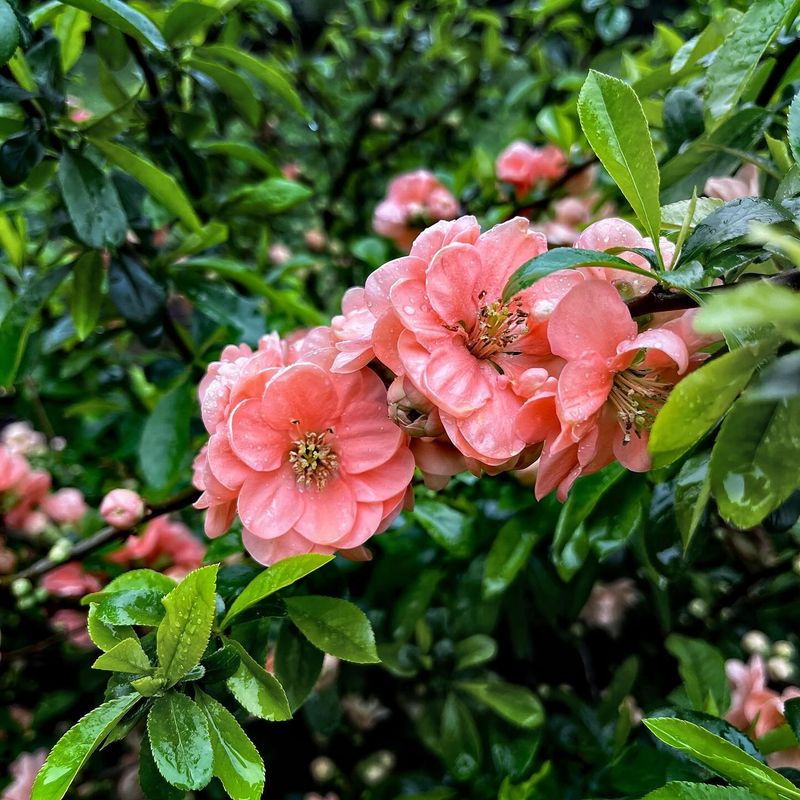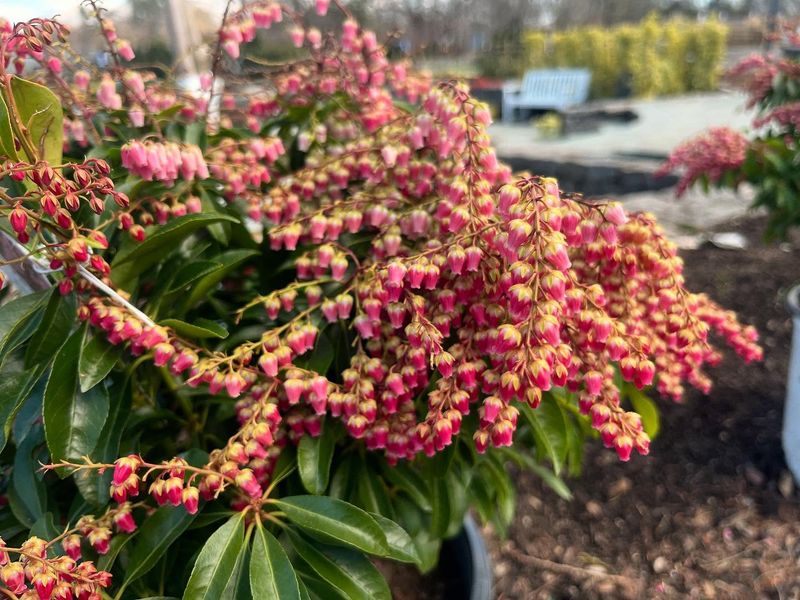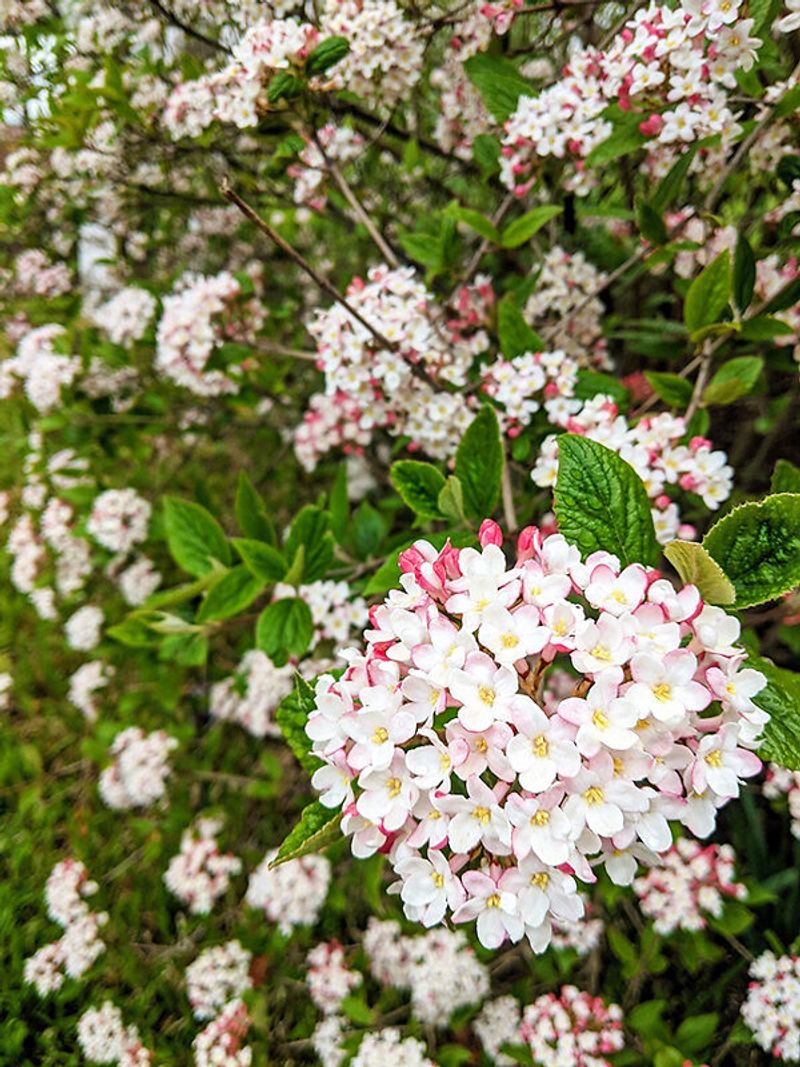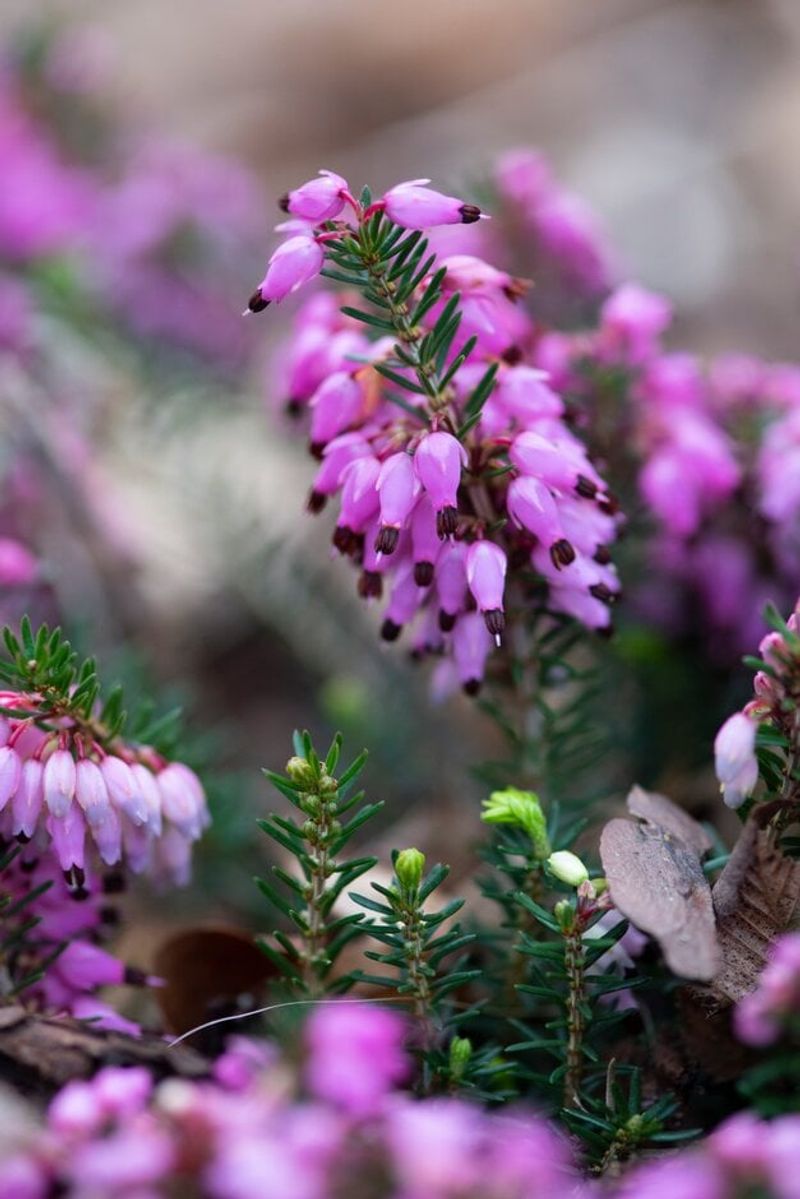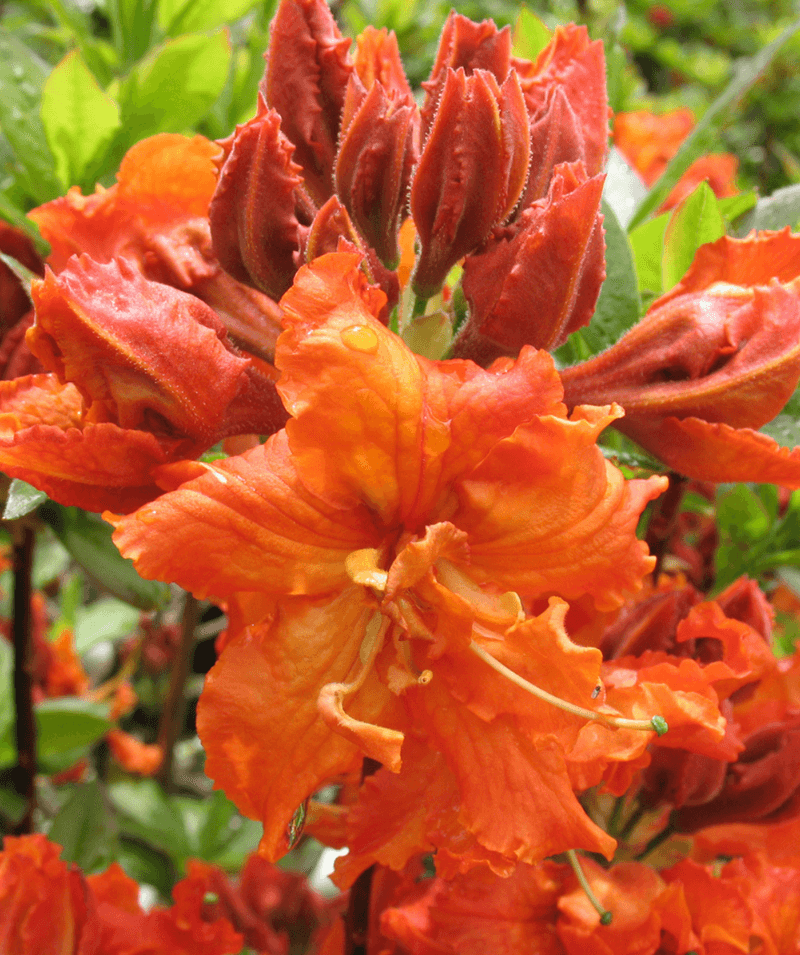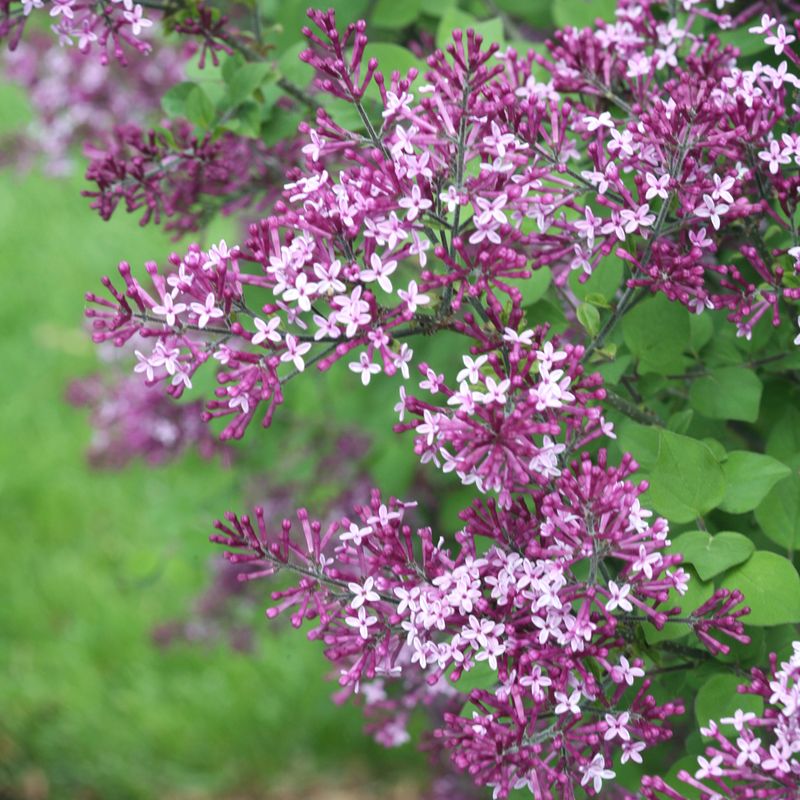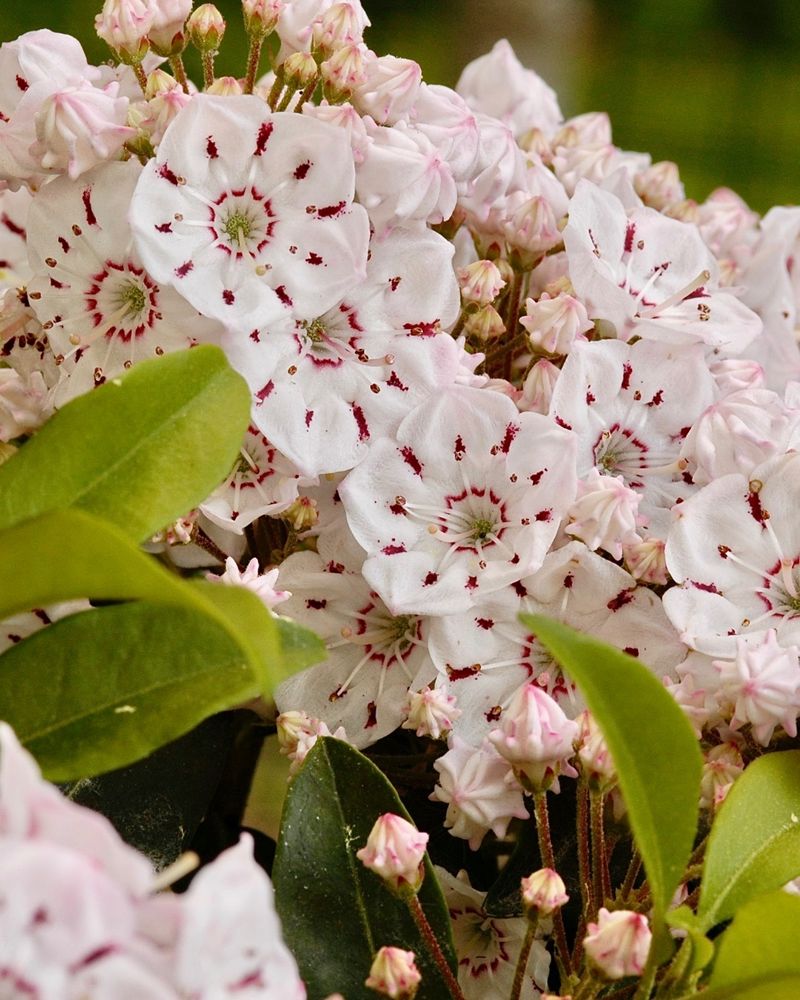If you’ve ever planted something in early spring only to have it fizzle out after a week—or worse, get zapped by a sudden cold snap—you’re not alone. I’ve learned the hard way that not all spring bloomers are built for the ups and downs of cooler climates.
That’s why I’ve come to really appreciate tough, reliable shrubs that don’t just pop for a moment and disappear.
These 16 flowering shrubs keep the color coming from early to late spring, even when the weather can’t make up its mind. They’re low-fuss, long-lasting, and perfect for adding dependable beauty to your spring garden.
1. Forsythia
Early spring gardens light up when golden bells appear before most other plants wake up. Hardy down to zone 4, these yellow flowers signal the true start of gardening season when other plants are still dormant.
Growing forsythia requires almost no effort – simply plant in a sunny or partly shaded spot and enjoy up to 3 weeks of bright blooms. Most varieties reach 8-10 feet tall but can be pruned immediately after flowering to maintain a smaller size.
Many gardeners use these as boundary markers or background plantings since the plain green summer foliage blends into the landscape after flowering. For best results, prune older stems to the ground every few years to encourage fresh growth.
2. Dwarf Korean Lilac
Unlike its larger cousins, this compact variety delivers the same intoxicating fragrance without taking over your garden. Standing just 4-5 feet tall at maturity, it fits perfectly in smaller spaces while still producing abundant purple-lavender blooms.
Cold hardiness is impressive, with plants thriving down to zone 3 without protection. The rounded growth habit requires minimal pruning, though removing spent flowers promotes better blooming the following year. Expect flowers to appear in mid-spring and continue for about three weeks.
Butterflies flock to the sweet-scented blooms, adding another dimension of garden enjoyment. Plant where you can enjoy both the fragrance and wildlife visitors, ideally in a spot receiving at least 6 hours of sun daily.
3. Weigela
Hummingbirds arrive like clockwork when trumpet-shaped flowers open on this easy-care shrub. Modern varieties like ‘Wine and Roses’ or ‘Sonic Bloom’ offer both colorful foliage and extended flowering periods from mid-spring through early summer.
Hardy to zone 4, most weigela varieties grow 3-5 feet tall and wide, creating a naturally rounded form without much pruning. The flowers range from deep pink to red, depending on variety, and appear profusely even in partial shade locations.
Some newer cultivars rebloom throughout summer. First-time growers often report surprise at how quickly these shrubs establish and how little care they require. Once established, they tolerate both drought and cold, making them perfect for gardeners who want maximum flowers with minimum fuss.
4. Fothergilla
Bottlebrush-like white flowers emerge before the leaves in early spring, creating an ethereal effect in woodland gardens. This North American native thrives in cooler climates down to zone 4, bringing three seasons of interest to partly shaded areas.
Spring flowers last 2-3 weeks, followed by blue-green summer foliage that turns spectacular orange, red and yellow in fall. Most varieties stay compact at 3-4 feet tall and wide, making them suitable for smaller gardens. The honey-scented blooms appear even on young plants.
Deer typically avoid fothergilla, adding to its appeal for gardens in rural areas. Plant in groups of three for the best visual impact, especially in spots where spring and fall color are equally important to your landscape design.
5. PJM Rhododendron
Cold weather poses no threat to this tough rhododendron that blooms reliably even after harsh winters. Unlike fussier varieties, PJM types flower abundantly in zone 4 gardens, with lavender-pink blooms covering the plant for weeks in mid-spring.
Compact growth reaching just 4-6 feet makes this evergreen manageable in most gardens. The small, leathery leaves turn plum-purple in winter, providing year-round interest even when not in bloom. Plant in morning sun with afternoon shade for best results.
Gardeners appreciate how these rhododendrons perform without the special soil amendments other varieties demand. They tolerate average conditions while still delivering spectacular flowering displays that coincide perfectly with spring bulbs and early perennials.
6. Deutzia ‘Nikko’
Arching branches become completely smothered in white flowers each spring, creating the appearance of a flowering waterfall. This low-growing shrub reaches just 2 feet tall but spreads to 5 feet wide, making it perfect for slopes, garden edges, or anywhere you need reliable ground cover.
Hardy to zone 5, ‘Nikko’ deutzia blooms for nearly three weeks in mid-spring. The small, star-shaped white flowers appear by the hundreds, creating a snow-like effect against the bright green foliage. Full sun produces the most flowers, but it tolerates light shade.
Low maintenance needs make this an ideal choice for busy gardeners. No regular pruning is required, and the dense growth naturally suppresses weeds once established. Simply trim back any wayward branches after flowering if needed.
7. Koreanspice Viburnum
From half a block away, the spicy-sweet fragrance draws visitors toward this outstanding spring shrub. Opening from pink buds to white flower clusters, the blooms perfume the garden for weeks in mid-spring, even in zone 4 gardens.
Growing to 4-5 feet tall and wide, this well-behaved viburnum fits into most garden spaces. The rounded flower clusters measure 3-4 inches across, appearing just as the leaves emerge. Fall brings the bonus of wine-red foliage and occasional red berries that attract birds.
Morning sun with afternoon shade provides ideal growing conditions, though plants adapt to full sun with consistent moisture. Gardeners consistently rate this as one of their favorite fragrant shrubs, often planting it near patios or windows where the scent can be fully appreciated.
8. Serviceberry
Native woodland edges come to life with clouds of delicate white flowers on this multi-season performer. Blooming in very early spring, often while nearby trees are still bare, serviceberry signals winter’s end even in zone 3 landscapes.
Growing as either a large shrub or small tree (10-15 feet), serviceberry offers edible blue-purple berries in early summer that attract birds and can be harvested for pies. The star-shaped white flowers last for about two weeks, followed by blue-green summer foliage that turns brilliant orange-red in fall.
Multiple seasons of interest make this native plant especially valuable in natural garden designs. Plant in groups for a more natural appearance, or use as a specimen in smaller gardens where its four-season appeal can be fully appreciated.
9. Daphne ‘Carol Mackie’
Gardeners who crave both fragrance and beauty find this variegated treasure worth every bit of attention it requires. Small pink-edged white flowers release an intense perfume that seems impossible from such tiny blooms, scenting the entire garden for weeks in mid-spring.
Reaching just 3 feet tall and wide, ‘Carol Mackie’ features cream-edged leaves that provide season-long interest after the flowers fade. Hardy to zone 5, it performs best in morning sun with afternoon shade and well-drained soil. Avoid disturbing the roots once planted.
Consider this a garden jewel rather than a background plant – place it where visitors can appreciate both the fragrance and the attractive variegated foliage. Many gardeners plant daphne near garden benches or entryways where its perfume can be fully enjoyed.
10. Flowering Quince
Early spring gardens burst to life when these bright flowers appear on still-bare branches. Hardy down to zone 5, flowering quince produces abundant blooms in shades from salmon to bright red, depending on variety, often before most other plants show signs of life.
Modern varieties like ‘Double Take’ offer improved flowering on more compact plants growing just 3-4 feet tall and wide. The flowers last for about three weeks and hold up well to spring storms and temperature fluctuations. Some newer types produce no thorns, making them more garden-friendly.
Traditional Japanese gardens often feature quince for early season interest. Branches can be cut while still in bud and brought indoors to force into bloom, providing indoor color while winter still holds the garden in its grip.
11. Andromeda (Pieris japonica)
Cascading clusters of lily-of-the-valley-like flowers dangle from this evergreen shrub for weeks in early spring. The distinctive drooping flower chains appear in late winter to early spring, bringing welcome color to zone 5 gardens when few other plants are blooming.
Most varieties reach 4-6 feet tall and wide, with glossy evergreen leaves that often emerge in bronze or red tones before maturing to deep green. The white or pink bell-shaped flowers last for nearly a month, holding up well to spring weather fluctuations.
Partial shade and protection from winter winds provide ideal growing conditions. Deer rarely browse this plant, making it valuable for gardens in rural areas. Gardeners appreciate both the early bloom time and the year-round structure that evergreen foliage provides to the landscape even after flowering ends.
12. Burkwood Viburnum
Spicy clove-like fragrance fills the air when snowball-shaped flower clusters open in mid-spring. Growing 8-10 feet tall with a similar spread, this reliable performer thrives even in zone 4 gardens, where many flowering shrubs struggle.
The rounded white flower clusters measure 2-3 inches across and last for about three weeks. Semi-evergreen foliage in northern zones becomes fully evergreen in milder climates, providing year-round structure.
Adaptable to both full sun and partial shade, it’s remarkably unfussy about growing conditions once established. Garden designers often use this viburnum as a foundation planting or informal hedge. The combination of fragrance and low maintenance makes it a smart choice for gardeners who want long-lasting color without constant care.
13. Winter Heath (Erica carnea)
Starting in late winter and continuing well into spring, these low-growing evergreens provide weeks of color when gardens need it most. The needle-like foliage becomes completely covered with tiny bell-shaped flowers in shades from white to deep pink, depending on variety.
Growing just 6-12 inches tall but spreading to 2 feet wide, winter heath creates excellent ground cover in sunny spots. Hardy to zone 5, these European natives thrive in poor, acidic soils where many other plants struggle. The blooms last for an impressive 8-10 weeks, bridging the gap between winter and spring.
Bees emerging on warm late-winter days appreciate this early nectar source. Plant in groups for the strongest visual impact, especially in rock gardens or along pathways where the low-growing habit can be easily appreciated from above.
14. Exbury Azalea
Spectacular color explosions arrive in mid-spring when these deciduous azaleas burst into bloom. Unlike their fussy evergreen cousins, these hardy varieties thrive in zone 4, producing large, often fragrant flowers in colors ranging from yellow and orange to pink and red.
Growing 4-6 feet tall and wide, Exbury types form naturally rounded shrubs that need little pruning. The trumpet-shaped flowers measure 2-3 inches across and last for about three weeks, often with a sweet honeysuckle-like fragrance.
Partial shade with protection from hot afternoon sun provides ideal growing conditions. Fall brings an encore performance when the leaves turn brilliant shades of orange and red before dropping.
15. Bloomerang Lilac
Traditional lilac fragrance arrives in spring and then returns throughout summer with this reblooming variety. The initial spring flowering matches classic lilacs in abundance, followed by smaller flush of blooms that continue into fall in zone 4 gardens.
Compact growth reaching just 4-5 feet tall and wide makes this modern lilac suitable for smaller gardens. The lavender-pink flowers appear profusely in mid-spring for about three weeks, with repeat blooms appearing about six weeks after the initial flowering ends.
Removing spent flower clusters encourages stronger reblooming. Gardeners who can’t get enough lilac fragrance appreciate how this variety extends the season far beyond traditional types. Plant in full sun for maximum flowering, and allow good air circulation to prevent powdery mildew during summer months.
16. Mountain Laurel
Native woodland gardens showcase these unique flowers that look almost like tiny origami creations. The intricate cup-shaped blooms open from distinctive ribbed buds, creating weeks of interest from mid to late spring even in zone 4 gardens with proper siting.
Growing 5-8 feet tall and wide, mountain laurel features glossy evergreen leaves that provide year-round structure. The star-patterned flowers appear in clusters and range from white to pink, often with contrasting markings. Morning sun with afternoon shade and acidic, well-drained soil provide ideal growing conditions.
Slow growth makes this native shrub a long-term garden investment. Patient gardeners are rewarded with decades of reliable spring flowering from established plants, which gradually develop a naturally artistic branching pattern that’s beautiful even in winter.
17. Magnolia ‘Ann’
Late frosts rarely ruin the flowering display of this smart little magnolia that blooms later than most. The deep purple-red tulip-shaped flowers open gradually over several weeks in mid-spring, avoiding the disappointment often experienced with earlier-blooming varieties.
Growing more like a large shrub than a tree, ‘Ann’ reaches just 8-10 feet tall and wide after many years. The fragrant flowers measure 3-4 inches across and appear before the leaves emerge, creating a dramatic silhouette against the spring sky. Hardy to zone 4 with protection from harsh winds.
First-time magnolia growers often choose this variety for its manageable size and reliable flowering in cooler climates. Plant where it can be viewed from windows to enjoy the rich purple-red blooms that signal spring has truly arrived.


